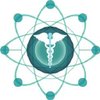Senior Biomedical Engineer
Senior Biomedical Engineer Interview Questions and Answers

Asked in Nahar Hospital

Q. What is defibrillator? Working principal? And modes?
A defibrillator is a medical device that delivers an electric shock to the heart to restore its normal rhythm.
Defibrillators are used to treat life-threatening cardiac arrhythmias.
They work by delivering an electric shock to the heart, which depolarizes the heart muscle and allows it to resume its normal rhythm.
There are two main types of defibrillators: external and implantable.
External defibrillators are used in emergency situations and are typically found in hospitals and ...read more

Asked in VS HOSPITALS

Q. Can you replace costly original items with compatible duplicates?
Yes, duplicate compatible items can be used as replacements to save costs.
Duplicate compatible items can be used as replacements if they meet the necessary specifications and standards.
Using duplicate compatible items can help save costs without compromising quality or safety.
For example, using generic compatible parts in medical devices instead of original branded parts can be a cost-effective solution.
Senior Biomedical Engineer Interview Questions and Answers for Freshers

Asked in SLG Hospitals

Q. How do you rectify problems with lights and ventilators?
To rectify the problem of lights and ventilator, first identify the root cause and then troubleshoot accordingly.
Check if there is a power outage or tripped circuit breaker
Inspect the wiring and connections for any damage or loose connections
Verify if the bulbs or ventilator motor are faulty and need replacement
Ensure that the switches and controls are functioning properly
Consult the manufacturer's manual for troubleshooting steps
If the issue persists, seek assistance from a ...read more

Asked in Nahar Hospital

Q. How many types of mechanical ventilation are there?
There are two main types of mechanical ventilation: invasive and non-invasive.
Invasive ventilation involves inserting a tube into the patient's airway, while non-invasive ventilation uses a mask or nasal prongs.
Invasive ventilation is typically used for patients who are unable to breathe on their own, while non-invasive ventilation is used for patients with less severe respiratory issues.
Examples of invasive ventilation include endotracheal intubation and tracheostomy, while ...read more

Asked in Sodexo

Q. What is the repair potential of critical care equipment?
Repairing critical care equipment is essential for patient safety and operational efficiency in healthcare settings.
Regular maintenance schedules can prevent breakdowns and extend equipment life, e.g., ventilators require routine checks.
Availability of spare parts is crucial; for instance, defibrillators may need battery replacements or electrode pads.
Training staff on troubleshooting can reduce downtime; for example, nurses can often reset infusion pumps.
Collaboration with m...read more

Asked in Kirloskar Technologies

Q. Where did you hear about KTPL?
I came across KTPL while researching biomedical engineering companies online.
Found KTPL while researching biomedical engineering companies online
Read about KTPL's work in the field of medical devices
Learned about KTPL's partnerships with hospitals and research institutions
Senior Biomedical Engineer Jobs


Asked in SLG Hospitals

Q. When checking a ventilator, what are the first basic checks you perform, including voltage supply, oxygen supply, O2 sensor, and flow sensors?
Basic checks for a ventilator ensure proper functioning and patient safety by verifying essential supplies and sensors.
Check voltage supply: Ensure the ventilator is receiving the correct voltage to operate effectively.
Oxygen supply: Verify that the oxygen tank or source is full and connected properly to prevent interruptions.
O2 sensor functionality: Test the O2 sensor to ensure accurate readings of oxygen levels delivered to the patient.
Flow sensors: Check flow sensors for p...read more

Asked in Sodexo

Q. How does hospital operating theatre equipment work?
Hospital OT equipment includes surgical tools and devices that assist in performing operations safely and effectively.
Surgical tables: Adjustable tables that provide optimal positioning for patients during surgery.
Anesthesia machines: Deliver anesthetic gases and monitor patients' vital signs.
Electrosurgical units: Use high-frequency electrical currents to cut tissue and coagulate blood.
Suction devices: Remove blood and fluids from the surgical site to maintain a clear view.
L...read more
Share interview questions and help millions of jobseekers 🌟


Asked in Cloudnine Hospital

Q. Principles of various equipments
Understanding principles of biomedical equipment is crucial for effective design and application in healthcare.
1. Imaging Equipment: MRI uses magnetic fields and radio waves to create detailed images of organs.
2. Ventilators: These devices assist or replace spontaneous breathing by delivering controlled breaths.
3. Infusion Pumps: They deliver precise amounts of medication or nutrients intravenously.
4. ECG Machines: They measure the electrical activity of the heart to diagnose...read more

Asked in Sodexo

Q. Expertise in Medical equipment
I have extensive expertise in designing, testing, and maintaining various medical equipment.
Experience in designing medical devices such as MRI machines, X-ray machines, and ultrasound equipment
Knowledge of testing procedures to ensure equipment meets safety and regulatory standards
Skills in troubleshooting and maintaining medical equipment to ensure optimal performance
Familiarity with software used in medical devices for data analysis and monitoring
Collaboration with healthc...read more
Interview Questions of Similar Designations
Interview Experiences of Popular Companies








Reviews
Interviews
Salaries
Users

















